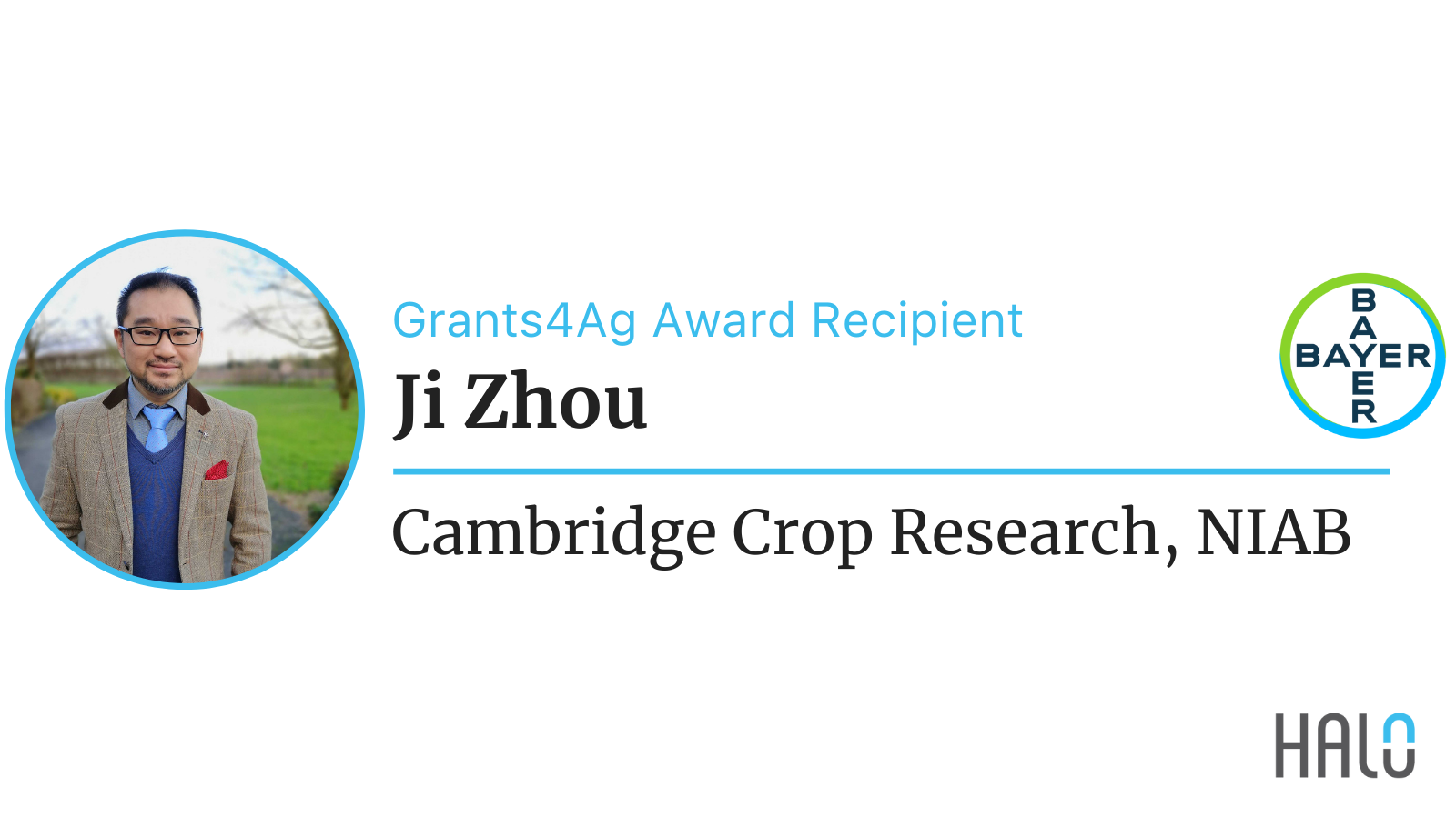Dr. Ji Zhou is taking part in agriculture’s digital revolution, integrating AI, aerial imaging, and remote sensing to determine how best to study complex plant traits. View Halo Profile >>
Tell us about your research.
I have led NIAB’s Data Sciences Department since early 2020. My lab focuses on developing multi-scale plant phenotyping and AI-driven phenotypic analysis by using a range of approaches such as satellite imagery, Agri-Drones, LiDAR, self-developed low-cost remote sensing, Videometer, and Opera HCS. Based on the large-scale and multi-dimensional plant phenotyping conducted both indoor and in the field, my lab and I incorporate genotyping and environmental datasets into the trait analysis so that novel solutions can be developed to address yield, quality and disease related challenges. My lab is specialised in Artificial Intelligence (AI, machine learning, and deep learning), computer vision, Internet of Things (IoT), and big data analytics with focuses on studying the UK’s key agricultural and horticultural crops, including wheat, Brassica, strawberry, lettuce and orchard fruits like apple.
Through these cross-disciplinary research activities, the continuous assessment of crop performance has been made possible in the context of global climate change.
Can you explain that to a non-scientist?
My lab carries out high-throughput 3D mapping (e.g. CropQuant-3D), low-cost distributed or smartphone-based phenotyping (e.g. CropSight and Leaf-GP), large-scale aerial crop monitoring (e.g. AirMeasurer and AirSurf), and automated AI-driven seed screening (e.g. SeedGerm). Through these cross-disciplinary research activities, the continuous assessment of crop performance has been made possible in the context of global climate change. I also work closely with leading research groups in the UK, Japan, and China at institutions like the University of Cambridge, the John Innes Centre, Kyoto University, and the Chinese Academy of Sciences, through which joint efforts have been made to advance research in genetic gain, trait stability, yield prediction, and genotyping-to-phenotyping linkage for larger crop populations and across different trial sites.
Why did you choose this area of research?
Prior to my career at NIAB-Cambridge, I was a project leader at Earlham, a joint research fellow between JIC and TGAC; and, a post-doctoral research fellow at The Sainsbury Laboratory (TSL). Through my previous work in plant-pathogen interactions, crop genetics, and plant phenomics, I am fascinated by computational techniques and how cross-disciplinary solutions could be developed to address challenging biological questions. Moreover, as a professional working in industry for nearly a decade where I was initially a bilingual IT professional in Shanghai, then a systems analyst and a project consultant at the Aviva group in Norwich, UK, I am also interested in seeking innovative solutions to advance plant research for crop research and breeding.
By combining aerial imaging, remote sensing, computer vision and deep learning techniques, we will develop dynamic models to monitor and predict key agronomic traits during the growth and development and use NIAB’s wheat pre-breeding lines to verify the work in real field conditions.
How could your Grants4Ag project someday impact #healthforall #hungerfornone?
The project proposed in the Grants4Ag call will assist breeders, growers, and researchers to determine the optimal moment to measure and select key agronomic traits. By combining aerial imaging, remote sensing, computer vision and deep learning techniques, we will develop dynamic models to monitor and predict key agronomic traits during the growth and development and use NIAB’s wheat pre-breeding lines to verify the work in real field conditions. Also, the result will: provide quantitative evidence for us to assess traits between tilling and harvest with regular aerial image evidence; generate developmental profiles of the traits so that the prediction of key traits under different environments will become possible; and, seek the optimal time to study complex traits (e.g. flowering and grain filling) so that phenotypic differences could be detected for large-scale phenotyping and more accurate genetic mapping.


